
The Archdiocese of Udine is a Latin Church ecclesiastical territory or archdiocese of the Catholic Church in Italy. The see was established in 1752 when the Patriarchal see of Aquileia was divided. From 1818 to 1846 it was a suffragan diocese of the Patriarch of Venice.

San Giorgio in Velabro is a church in Rome, Italy, dedicated to St. George.

The Diocese of Brescia is a Latin diocese of the Catholic Church in the ecclesiastical province of the Metropolitan Archdiocese of Milan, in Lombardy.
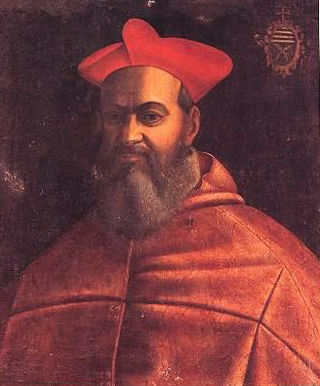
Scipione Rebiba was an Italian prelate of the Catholic Church, a protégé of Gian Pietro Carafa, who became Pope Paul IV. He held a variety of positions in the Church hierarchy, including some of the most senior. He introduced the Inquisition to Naples in the 1550s and became a cardinal in 1555. He is mostly known today for having been the earliest bishop to whom most Roman Catholic bishops can trace their apostolic succession, as it is unknown who consecrated Rebiba.

Juan Carvajal (Carvagial) was a Spanish Cardinal. Though he began his career as a lawyer and judge in the papal administration, he spent most of his active life travelling as a diplomat in Germany and eastern Europe, attempting to arrange a crusade against the Ottoman Turks. He was particularly active in Bohemia and Hungary, where he also employed his powers to fight the Hussites. He was a mainstay in trying to preserve the institution of the Papacy from the Conciliarism of the Council of Basel.
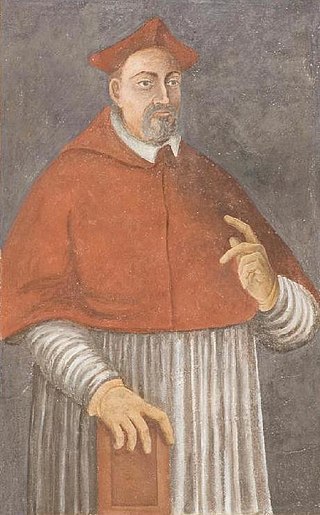
Francesco Pisani was an Italian Cardinal, born in Venice, the son of Alvise Pisani the noted banker, who was Procurator of S. Mark's, a member of the Council of Ten, and a Councilor of the Doge of Venice; and Cecilia Giustinian. He had a brother named Giovanni (Zuan), who also became Procurator of S. Marks' and was a Venetian diplomat; he was married to the sister of Doge Andrea Gritti. He was a strong supporter of the alliance between Venice, France and the Papacy, called the League of Cognac. He shared the imprisonment of Pope Clement VII in the Castel S. Angelo during the Sack of Rome and its aftermath. He spent eighteen months in exile in Naples while Clement made his peace with the Emperor Charles V.
Giovanni Antonio Serbelloni was an Italian Cardinal.

The diocese of Teano-Calvi is a Latin diocese of the Catholic Church in Campania, southern Italy, created in 1986. It is a suffragan of the Archdiocese of Naples. The historic Diocese of Teano and diocese of Calvi Risorta were united in 1818, forming the diocese of Calvi e Teano.
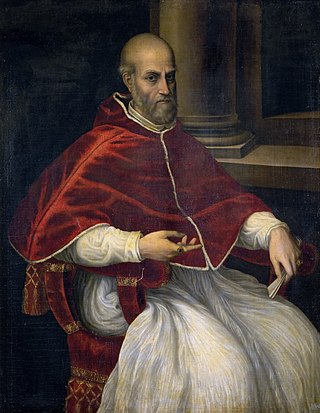
The April 1555 papal conclave was convoked after the death of Pope Julius III. Cardinals at the conclave generally grouped themselves into three major factions, according to their alignment with the French House of Valois, the Hapsburgs, or Italian states that remained independent of both major Catholic powers. After preparing a conclave capitulation that compelled whichever cardinal was elected pope to maintain neutrality in European wars, cardinals from the Holy Roman Empire joined in supporting the French faction's candidate, Cardinal Marcello Cervini. Cervini was elected Julius's successor, and chose to maintain his baptismal (birth) name as his papal name, becoming consecrated as Marcellus II.

The 1592 papal conclave elected Pope Clement VIII in succession to Pope Innocent IX.

Guido Ascanio Sforza di Santa Fiora was an Italian cardinal, known also as The cardinal of Santa Fiora.
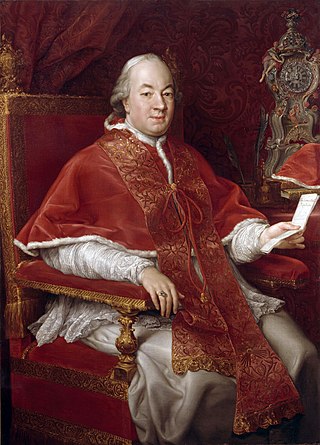
The 1774–75 papal conclave, was convoked after the death of Pope Clement XIV and ended with the election of Cardinal Giovanni Angelo Braschi, who took the name of Pius VI.
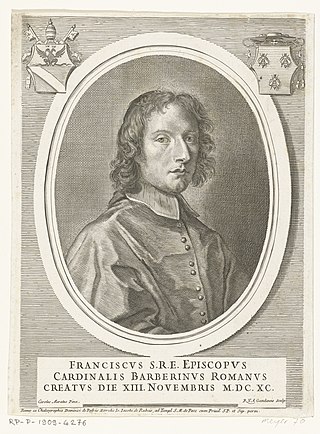
Francesco Barberini, iuniore was an Italian Cardinal of the family of Pope Urban VIII (1623–1644) and of the Princes of Palestrina.
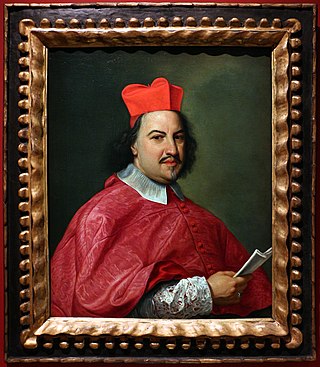
Giovanni Francesco Ginetti was a nephew of Cardinal Marzio Ginetti (1585-1681).

Giovanni Michiel was an Italian Roman Catholic cardinal and bishop.
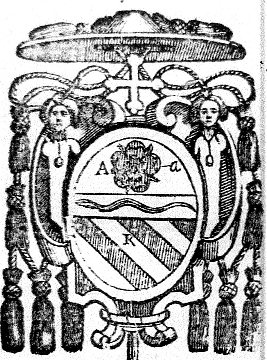
Giambattista Orsini was an Italian Roman Catholic cardinal. He served as papal legate to the Marches of Ancona.

Giuliano Cesarini the Younger was an Italian Catholic prelate and cardinal.

Fulvio Giulio della Corgna was a Tuscan Catholic bishop and cardinal.

Giovanni Ricci was an Italian Roman Catholic bishop and cardinal.
The Archbishopric of Damascus is a Roman Catholic titular see located in Damascus, Syria.





















